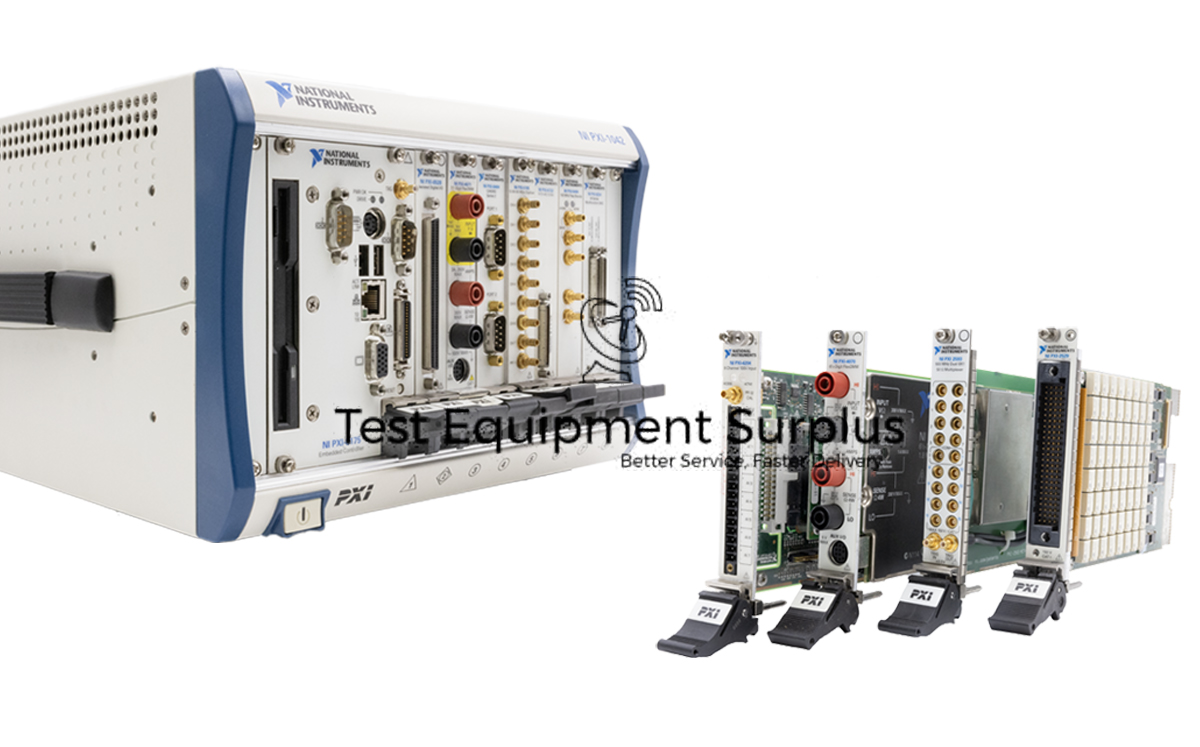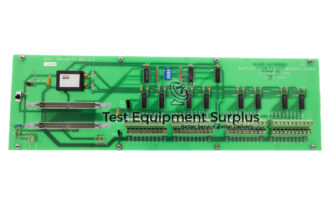Description
The National Instruments PXI-7811 is a Digital Reconfigurable I/O Module with Part Number 778800-01 that features a client-programmable FPGA for on-board processing and flexible I/O operations, compatible with LabVIEW FPGA software. This module is built on the Virtex-5 FPGA platform, boasting a six-input lookup table (LUT) architecture and DSP48 slices that enhance digital signal processing capabilities. It is designed for a variety of applications including high-speed waveform generation, sensor simulation, hardware in the loop (HIL) testing, custom communication protocols, bit error rate testing, and more. Despite its Obsolete Status announced by National Instruments, it remains available for purchase and repairs through Apex Waves.
| Attribute | Details |
|---|---|
| Product Name | National Instruments PXI-7811 PXI Digital Reconfigurable I/O Module |
| Part Number | 778800-01 |
| Type | Digital Reconfigurable I/O Module |
| Programmability | Client programmable FPGA for on-board processing and flexible I/O operations |
| Software Compatibility | LabVIEW FPGA |
| FPGA Type | Virtex-5 FPGA |
| Lookup Table (LUT) | Six-input LUT architecture |
| DSP Slices | DSP48 slices for digital signal processing |
| Applications | High-speed waveform generation, sensor simulation, hardware in the loop (HIL) testing, custom communication protocols, bit error rate testing, etc. |
| Obsolete Status | Announced by National Instruments, available for purchase and repairs by Apex Waves |
Question 1: What types of applications is the National Instruments PXI-7811 Digital Reconfigurable I/O Module, with its Virtex-5 FPGA platform and compatibility with LabVIEW FPGA software, designed to support despite its Obsolete Status?
Answer 1: The National Instruments PXI-7811 Digital Reconfigurable I/O Module is used for high-speed waveform generation, sensor simulation, hardware in the loop (HIL) testing, custom communication protocols, and bit error rate testing, among other applications; although it has been declared obsolete by National Instruments, it continues to be available for purchase and repairs through third-party vendors such as Apex Waves.
Question 2: What applications can the National Instruments PXI-7811 Digital Reconfigurable I/O Module be used for despite its Obsolete Status?
Answer 2: The obsolete National Instruments PXI-7811 Digital Reconfigurable I/O Module is designed for high-speed waveform generation, sensor simulation, hardware in the loop (HIL) testing, custom communication protocols, and bit error rate testing, among other applications, and it is still available for purchase and repairs through Apex Waves.
Question 3: What are some of the applications for which the obsolete National Instruments PXI-7811 Digital Reconfigurable I/O Module is designed, and through which company is it still available for purchase and repairs?
Answer 3: The National Instruments PXI-7811 Digital Reconfigurable I/O Module is designed to support a variety of applications including high-speed waveform generation, sensor simulation, hardware in the loop (HIL) testing, custom communication protocols, and bit error rate testing, despite its Obsolete Status.
Question 4: What are the applications of the National Instruments PXI-7811 Digital Reconfigurable I/O Module, and how has its obsolete status affected its availability for purchase and repairs?
Answer 4: The National Instruments PXI-7811 module offers functionalities such as on-board processing through a client-programmable FPGA, flexible I/O operations, enhanced digital signal processing capabilities with its Virtex-5 FPGA platform, which includes a six-input lookup table architecture and DSP48 slices, making it suitable for high-speed waveform generation, sensor simulation, and various other applications.
Question 5: What functionalities does the National Instruments PXI-7811 module offer for applications such as waveform generation and sensor simulation?
Answer 5: Despite its Obsolete Status, the National Instruments PXI-7811 Digital Reconfigurable I/O Module can be used for high-speed waveform generation, sensor simulation, hardware in the loop (HIL) testing, custom communication protocols, and bit error rate testing, among other applications.



